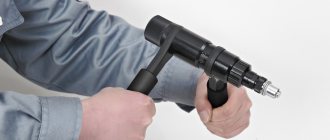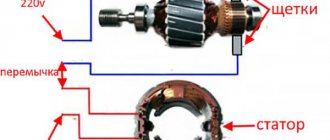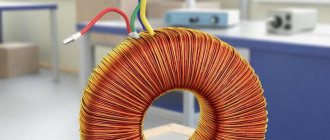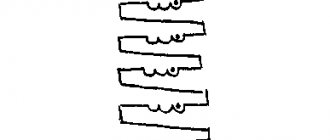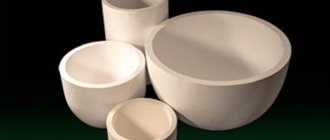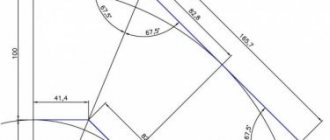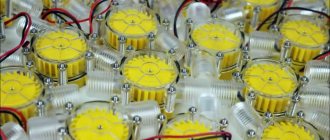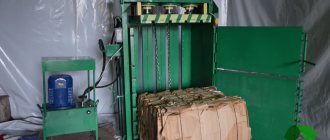The cost of traditional energy resources is rising, and increasingly, owners of private houses are deciding to use various types of biomass for heating. One of these types of fuel is pellet. It consists of pressed granules, and small sawdust, peat, straw, etc. can be used as materials. Since the production of this type of fuel in the CIS countries is poorly developed, many people decide to make pellets with their own hands.
One of the practical types of fuel is pellets
What are pellets?
Pellets
are a granular type of solid fuel, cylindrical in shape, made from compressed waste from agricultural production and the woodworking industry. The main materials for the manufacture of fuel pellets are:
- sawdust, wood chips, bark, slabs of coniferous and deciduous (the best option) wood species;
- peat;
- sunflower husks (the most common solution), rapeseed (the best option), straw of various grain crops, corn, husks, cake and much more;
- charcoal;
- household waste.
The base binder is a substance of plant origin - lignin, a natural polymer contained in almost any plant, capable of being plasticized during granulation under the influence of a sufficiently high operating temperature.
Raw materials
- Sawdust and shavings. Sawdust pellets are considered granules of the first category and are characterized by the lowest ash content in combination with a high specific heat of combustion. They can be used in any heating boilers, including low-power installations. The wholesale cost of sawdust starts from 100–150 rubles/m³;
- Woodchips. For the production of fuel pellets, waste from sawmills, as well as crushed remains of substandard wood, are often used. Due to the presence of bark and roots, this raw material is less valuable, since the content of such impurities leads to an increase in ash content. The average cost of wood chips is from 150–200 rubles/m³;
- Peat. Not only pellets are produced from high-moor peat, but also peat briquettes, which can be burned both in boilers designed for this purpose and in ordinary fireplaces. The ash content of peat granules is within 3%, which allows them to be classified in the second category and successfully used in industrial installations. The average cost of peat is 290 rubles/m³;
- Straw. This raw material for the production of pellets has the highest calorific value combined with an ash content of 4–10%. Therefore, straw pellets serve as fuel mainly in large thermal power plants equipped with specially designed boilers. The cost of straw is from 340 rubles/m³;
- Agricultural waste. Pellets can also be made from waste from processing agricultural crops - sunflower, buckwheat, corn, flax. With an ash content of 2.5–7%, this type of fuel requires the installation of an automatic boiler cleaning system. The cost of sunflower husks is 180 rubles/m³.
The quality of raw materials should be assessed in accordance with several main criteria that determine their suitability for further processing:
- The source material should not contain any solid impurities (stones, sand, metal), debris and non-combustible mineral residues;
- The raw materials must include lignin and organic resins;
- The moisture content of the material should not exceed 35–40% (otherwise the production process is greatly slowed down and drying costs increase).
Pellet classification
The main regulatory document predetermining the production of pellets is the European Union standard EN 14961-2, adopted in January 2011, on its basis an international quality certificate EN Plus is issued. There are three classes of granular fuel:
- ENPlus-A1 – best premium quality, diameter up to 8.00 mm, ash content up to 0.70%, another name is “white granules”;
- ENPlus-A2 – with ash content up to 1.50%, also called industrial granules, can consist of mixed wood species;
- EN-B – standard quality, with ash content up to 3.00%, an alternative name for agropellets.
In terms of cost, the most expensive pellets are ENPlus-A1 class, the cheapest are EN-B class, it is better not to take substandard fuel.
Basic parameters of pellets
Pellets for heating are granules of white or shades of brown, with a length from 10.00 to 30.00 mm, a diameter of 6.00 and 8.00 mm, less common fuel with a diameter of 10.00 mm, the maximum diameter of the granules is 25.00 mm. The darkening of pellets is associated with the presence in the structure of the material of various non-combustible residues (dust, earth, and a number of others).
The main parameters of pellets are:
- ash content (the lower, the better and the less ash, so the boiler will have to be cleaned much less often);
- humidity;
- calorific value (ENPlus-A1 – 18.0 MJ/kg, ENPlus-A2 – 18.0 MJ/kg, EN-B – 15.0 MJ/kg).
- total length;
- degree of density;
- diameter;
- bulk mass;
- abrasion class.
Pellet manufacturing technology
The production of pellets consists of pressing waste that has been previously dried to a certain moisture content and crushed to a given fraction under a pressure of about 300 atmospheres. At the same time, the use of glue and other additives is prohibited (sometimes unscrupulous businessmen add sand and other non-combustible impurities to them to increase the weight of the granules, and synthetic polymers to ensure adhesive properties).
Main stages of pellet production:
- Grinding. The raw material enters the crusher and is crushed to a given fraction;
- Drying. The resulting raw material is dried to the moisture percentage specified by the technology (about 10% plus or minus 2%);
- Pressing. The dried raw material enters a press granulator, in which it is pressed into granules of a given length and diameter. As a result of compression, friction, and adiabatic processes, the temperature can reach 100°C Celsius, as a result, thermal energy is generated that softens lignin and the particles stick together into granules. This process is called pelletization;
- Cooling. To ensure the strength of the fuel granules, the pellets are cooled after pressing;
- Packing and sending to the consumer.
In some cases, water treatment and additional grinding are performed before pressing; everything directly depends on the type and quality of the raw materials from which the granules are made. Pressing is carried out in molds, ring-type dies using rotary rollers (rollers), which press the raw material into cone-shaped dies located on the matrix. On the other hand, the resulting granules are cut with special knives. After cooling, the pellets are sieved and small particles are sent for recycling. Closed cycle technology is virtually waste-free; only non-combustible impurities are removed. In order to make one ton of pellets, three to five cubes of wood waste are needed. The raw material is compacted approximately three times. To prepare one ton of pellets you need from 30.00 to 50.00 kW per hour.
Financial plan
Investments in a business project
To organize production, the following investments in rubles are needed:
- registration of an enterprise – 10,000;
- certification – 30,000;
- production line – 2,950,000;
- transportation, installation and commissioning of equipment – 590,000;
- additional inventory – 100,000.
Total: 3,000,000 rubles
Current expenses
Monthly costs for the production of each ton of fuel in rubles will be:
- raw materials – about 750;
- electricity – 450;
- salary – 400;
- depreciation – 240;
- packaging and transportation – 120;
- other expenses (rent, transportation, etc.) – 200.
Total: 2160 rubles.
Sales revenue
The productivity of the mini-plant with a standard eight-hour working day allows the production of up to 60 tons of pellets per month. The wholesale cost of a ton of products is about 6 thousand rubles. As a result, your monthly income will be 6000x60=360000 rubles.
The cost of producing 60 tons of pellets will be 2160x60=129600 rubles. Thus, the net profit will be 360,000-129,600 = 230,400 rubles.
Necessary machines for the production of pellets
Equipment for the production of sawdust pellets includes:
- crushers (chopping machines) for grinding the raw materials used to a given fraction;
- dryers to ensure the required percentage of humidity of the initial, base raw materials;
- hammer mills (in some cases they are replaced by flaring machines, disintegrators, everything depends directly on the characteristics of the feedstock), make it possible to obtain raw materials with a fraction of up to 4.00 mm;
- screw mixers (used when using overdried raw materials with a moisture content of less than 8.00%, by dosed supply of steam or water);
- presses (differ in the type of matrix used, which can be flat or round).
Dryers, in turn, are divided into:
- principle of operation (can be drum or belt (cost more, but are more productive and safer to use));
- drying technologies (using flue gases, water vapor or hot air);
- the fuel used (gas, wood waste, coal, etc.).
To burn pellets, special equipment is used - a pellet boiler.
.
The optimal solution in terms of price/quality/performance ratio on the Russian market is heating appliances from the Polish manufacturer Metal-Fach, including boilers from the SD DUO
,
SD DUO BIO
,
SMART
,
SMART EKO
,
SEG, SEG BIO
.
They have a steel heat exchanger (P265GH steel with a thickness of 4.00 to 6.00 mm is used for production), an efficiency of over 90%, an innovative, modern type controller FL 310LGRTC
, with continuous logic and PID control, as well as an upper combustion chamber and a retort type burner.
Also worthy offers are:
- domestic boilers created in Krasnoyarsk, ZOTA
Pellet
series ; - joint development of the Russian-Polish company Vulkan
, the
EKO
; - pellet boilers from the legendary Italian company FACI
Caldaie,
FACI SSL/SSP
.
You can purchase pellet boilers in a wide range, get the necessary advice, order installation, warranty and post-warranty service in Krasnoyarsk from the Kras-Kotel company.
How to distinguish high, premium quality pellets from substandard fuel?
When purchasing pellets, you need to pay attention to:
- the surface of the material must be smooth, shiny, without signs of deformation (swelling and microcracks);
- diameter (this parameter is established by the standards, the minimum value is 4.00 mm, the maximum is 10 mm, also standard are fuel pellets that have a diameter of 6.00 and 8.00 mm, please note that a pellet boiler operates on pellets of a certain fraction);
- length (this parameter should be about 20.00 - 30.00 mm, this is the optimal value, although the equipment can work on pellets with a length of over 50.00 mm);
- smell (the granules should have a slightly sweet smell of freshly prepared glue, this is a clear sign of excellent quality);
- color (it is important to remember that the highest quality pellets are white or slightly cream-colored, agropellets are predominantly dark, and in wood pellets, dark color indicates that bark, other impurities have been added, or wood species have been mixed);
- dust (there should be a minimum amount of dust on pellets, so it is better to buy fuel in sealed packaging);
- impurities (the presence of non-combustible impurities in the granules themselves can only be checked by burning them and determining the residue in the form of solid particles).
Advantages and disadvantages of solid fuel in the form of fuel pellets
The main advantages of pellets:
- environmental cleanliness (when burning this type of solid fuel, carbon dioxide is released in volumes equal to the volumes formed during the natural decomposition of various wood wastes);
- fire safety (pellets are less susceptible to spontaneous combustion than other types of solid fuel);
- optimal humidity (8-10% versus 30-50% for logs) and density (one and a half times higher than that of firewood);
- remarkable calorific value, one ton of fuel pellets is enough to produce 3500 kW/h of thermal energy;
- constant and very high bulk density, which facilitates logistics, loading and transportation of pellets;
- the uniformity of the structure in shape and size makes it possible to automate all processes of loading and loading and combustion of fuel pellets in boilers.
Cons of pellets:
- high cost of solid fuel at the present stage;
- to burn pellets you need a special pellet boiler equipped with automation, which also costs more;
- the volume of supply on the market is low, the situation will improve over time, but pellets must be purchased in reserve and stored in warehouses, preventing excess moisture from entering.
Methods of promotion and sales
Of course, the segment of private owners using solid fuel boilers with a power of up to 100 kW is gradually growing, currently consuming about half of domestic production. However, in the near future, the retail share of the pellet market will significantly decrease due to the emergence of a new class of buyers of fuel pellets, burning them in boilers with a capacity of 250–1000 kW for heating factory workshops, greenhouses and warehouse complexes, business centers, residential buildings and even cottage villages.
When listing the most effective distribution channels for fuel pellets, the following options can be mentioned:
Pellet cost
Let's take the initial data:
- the average cost of industrial pellets in the Krasnoyarsk Territory as of December 2015 is 3,500 rubles per ton (3.50 per kilogram);
- the price of birch firewood is 1,300 rubles per cubic meter, in terms of tons (a cubic meter of dry birch firewood equals 650 kg of weight) is 1,846 rubles per ton (1.85 rubles per kilogram);
- the calorific value of birch firewood is 10 MJ/kg;
- The calorific value of wood industrial pellets is 18 MJ/kg.
In order to obtain 100 MJ of thermal energy, you need 10 kg of firewood (100/10), that is, 18.50 rubles, or 5.5 kg of pellets (100/18), that is, 19.44 rubles. The difference in cost is 1 ruble per 100 MJ. Moreover, it is necessary to note the undoubted advantages of pellets with an ash content of 1.5% over firewood with an ash content of 10%, the difference is obvious. It should be taken into account that the pellet market is growing dynamically, and with an increase in supply, the price will undoubtedly decrease. By the way, pellets can be made independently from agricultural or wood waste. Read below how.
What is the price
The cost of opening such a business is quite high.
To launch the plant, an entrepreneur will need to invest about 7 million rubles. The main expense item is, of course, the purchase of equipment. This will cost about 6.5 million. This will include not only the purchase of devices for the production of granules, but also their installation, configuration, as well as the purchase of raw materials. You will also have to spend money on renting the building (which is about 50 thousand rubles). Also, do not forget about advertising costs, because without an advertising campaign it will be difficult to attract consumers. And networkers are more willing to work with companies that themselves promote their products.
But is it profitable to take on this business at all, since the initial costs are quite serious and impressive? The profitability of this business, according to statistics, is quite high. Raw materials are inexpensive. The main costs are equipment maintenance. The workshop will pay for itself in approximately 2 and a half years.
We make pellets with our own hands
You can make pellets with your own hands. To do this we need to assemble a granulator. It is necessary to take wood or agricultural waste, grind it to a particle fraction of 30.00-50.00 mm, dry it to a moisture content of 15.00%, grind it to particles with a fraction of 2.00 mm and place it in a granulator. In the case when you use agricultural waste, such as sunflower husks, rapeseed or sawdust, as the initial, basic raw material, you do not need to crush anything. But if branches, bark, or various substandard lumber are used, it is necessary to crush, although the use of a granulator allows you to omit this operation. The dryer is made from an ordinary metal barrel. It is better to use a granulator with a flat matrix (a cylindrical matrix in the shape of a perforated drum is a more complex solution) and a perforated disk with outlet holes in the shape of a cone with a diameter of 8.00-10.00 mm, this is the optimal solution. You need to buy a matrix and rollers (the production of spare parts is carried out by manufacturers of equipment for the production of animal feed). The matrix is also made independently, from steel with a thickness of at least 20.00 mm, and gears are used as rollers. You will also need a gearbox and an electric motor with a power equal to or greater than 15.00 kW. It is necessary to ensure rotation in the range of 60-120 revolutions per minute. The shaft can be installed both horizontally and vertically; the main thing is to make tanks for loading the raw materials and subsequent unloading of pellets.
Stages of making pellets:
- we take or make a matrix, make a hole in the center for the gearbox and always a groove intended for landing;
- gears (rollers can be used, the width of which must match the width of the working surface of the matrix used), are put on the shaft strictly perpendicular to the axis of the installed gearbox shaft using a conventional coupling;
- the cylindrical body is welded from sheet steel or steel pipe, taking into account the dimensions of the matrix, which should rotate easily and freely, providing holes for unloading pellets and a tray also made of sheet steel or steel pipe, the bottom and top of the structure can be made detachable to facilitate maintenance;
- the output shaft of the selected gearbox is strengthened in the lower part of the machine using a coupling and always bearings;
- the matrix, as well as the rollers, are installed in a cylindrical body;
- the resulting structure is mounted on a frame made of a channel or an ordinary angle and is rigidly fastened; all that remains is to install the engine and connect the output shaft to the installed gearbox.
The future belongs to pellets and pellet boilers. Kras-Kotel specialists will help you make the right choice of pellet boiler, taking into account all your wishes and the characteristics of your home.
Share on social media networks:
Granulator device
The granulator is similar in design to an electric meat grinder with one difference: the knife is located on the outside, behind the matrix grid.
During the granulation process, the raw material mass is loaded into a hopper, from which it is pushed under pressure through a mixture heated to 110 degrees. matrix. The movement of the screw ensures that the mixture is pushed, creating pressure and pressing the crushed and moistened raw materials against the matrix.
Upon reaching a critical volume value, the compressed raw material is forced through the holes of the matrix. A special cutter cuts the granules to the required size. Plastic capsules cool down, maintaining their shape.
You may also be interested in information about how to keep Indian ducks at home.
The operating principle consists of sequential operations:
- supplying crushed feed from the hopper to the rotating shaft;
- compression;
- pressing through the matrix;
- cutting with a knife;
- entering the receiving bowl.
The diameter of the holes in the grid determines the diameter of the capsules. Depending on the power of the electric motor, the diameter can be from 5 to 10-15 mm. The distance at which the knife is installed after the grate determines the length of the granules.
The video shows how the granulator works and works:
Main parts of the granulator:
- loading hopper;
- screw;
- matrix;
- knife;
- drive shaft;
- gearbox;
- electric motor;
- bed;
- receiving bunker.
But how to breed ducks at home for beginners and what you should pay attention to is indicated here. All parts of the device are made of metal
All parts of the device are made of metal.
The specific characteristics of the thickness and diameter of the matrix, the diameter of the screw, and the power of the electric motor are determined together.
The units offered by manufacturers can be used for preparing not only feed, but also pellets (fuel pellets made from sawdust).
Main characteristics of granulators offered by manufacturers:
The maximum power of manufactured units is 30 kW with a productivity of more than 1000 kg per hour. The weight of the installation is more than 500 kg.
But what the blue favorite duck looks like and how to properly breed it at home is indicated here.
Device cost
- with a 2.2 kW electric motor – from 53,000 rubles;
- 7 kW – from 83,000 rubles;
- 15 kW – from 190,000 rub.
Advantages of industrial granulators:
- reliability;
- duration of operation;
- versatility;
- efficiency;
- safety;
- convenient service.
The high cost of units manufactured in industrial conditions forces livestock breeders to make devices in a handicraft way, using improvised means.
But you can read here how broilers are raised without feed and what feed should be used.



